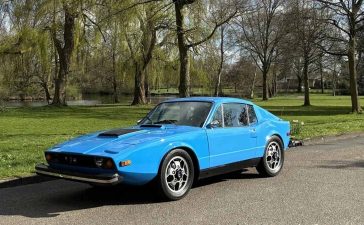On several occasions we have addressed this blog with the characteristic Saab safety test – The Elk (Moose) Test, which in practice has proven and proven necessary, and which has saved many lives. The last such “live” example we had a few weeks ago on the roads in Poland, when one Saab 9-3 hit the big Elk.
Table of Contents
Saab’s moose test
The world’s automotive media, when introducing the new Saab models, did not much concern themselves with the safety features of these cars – because they were somehow implied. However, it’s never too much to point out the safety features of a Saab car, so Automobile Magazine once pointed to this unknown test designed by Saab.
Automobile Magazine have slotted a post into their online blog covering Saab’s moose test. I’d imagine most visitors here would be familiar with the moose test, but just in case…..
In addition to the usual battery of side-impact, head-on, and offset crash tests, the engineers at Saab subject the car to a simulated encounter with an elk at speed…..the elk is actually an 850 pound bundle of metal and lumber wrapped up in a blanket. But it is propped up on stands to approximate the correct height and center of gravity for a real elk.
Saab engineers have done this test for years and this is one of the reasons our Saab cars are so structurally sound. That’s interesting enough for those who didn’t know about the moose test (or elk, as they call it elsewhere). let’s get one thing straight: even though Europeans call their moose ‘elk’, they are in fact one and the same; their North American brethren are the same species.
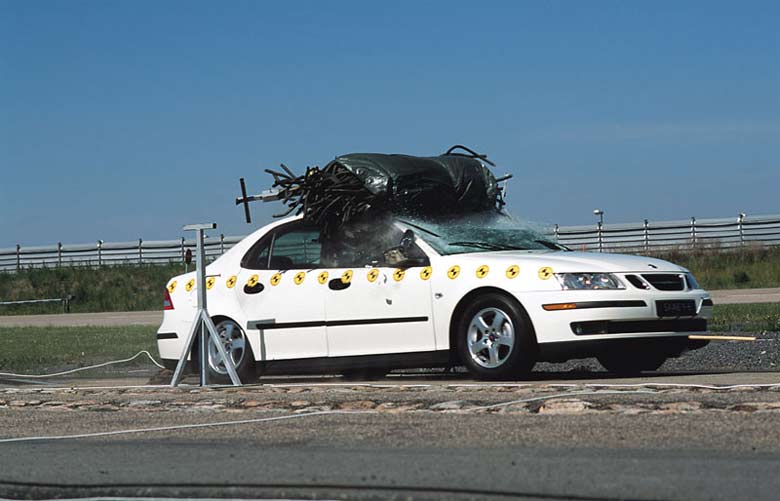
Big animals on roads around the world
In scientific circles, the term ‘elk‘ is used to refer to slightly smaller animals that share some of the same habitat in North America, but are limited to Eastern Asia on the Eurasian land mass. Elk are quite similar to the red deer of Europe. Actually this test should be conducted in other countries, so let’s say in Some coutries they don’t have ELK but horses can represent the same hazard, or in Africa they deal with kudus (an antelope) of which the bull carries a lot of weight.
Danger lurks from the dark
They are nocturnal and cause the greater majority of accidents in Namibia. The most dangerous part of any journey is simply just before daylight peters out and early morning. You do not see them, apart from the slight flickering of something similar to the red-eye when you take pictures at night and the rest is history. The most scary thing when you drive at night in this country can be summed up in one word: kudu…
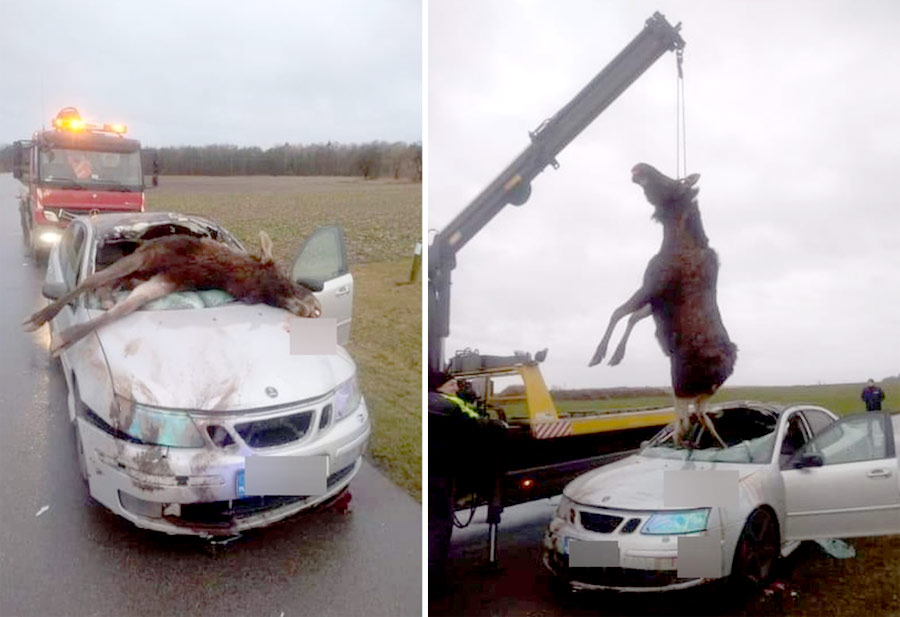
Car-Moose Crashes
Also, in Sweden and other countries in northern Europe and the Americas, especially Finland, Norway, Poland and Canada, car-moose crashes happen an average of ten times a day or more, depending upon the source. This is why Saab engineering teams obsess about this ‘real world safety’ test. It really makes a difference in this part of the world.
According to some statistics, about 5% of all car crashes just in Sweden mention a moose as a cause of an accident. The Moose are BIG. They range in size from one-half-ton up to about a ton – when a car slams into a moose at normal driving speeds, bad things happen a great deal of the time.
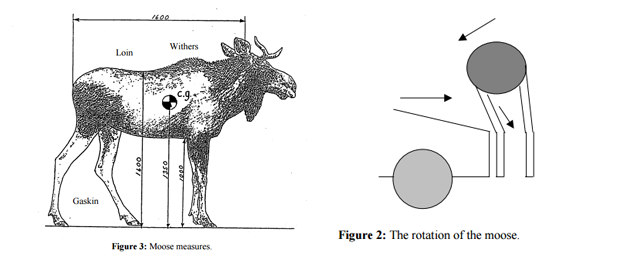
This little excerpt from Channel 4′s 4Cars (UK) says it best:
There are some 600,000 moose on the loose in this overgrown Christmas-tree plantation [that is, Sweden] and, in some districts, they account for up to a quarter of all road traffic accidents. Indeed, 5 per cent of all reported accidents involving Saab cars cite a moose as the third party.
The moose test performed by Saab
The moose test performed by Saab actually consisted of two parts: part one simulates the driver’s crash avoidance maneuvers to test steering stability, while the second part tests the structural integrity of the A-pillar through a series of crash tests meant to simulate an impact with a moose’s front or rear legs at normal driving speeds.
These days, all manufacturers have some sort of testing for quick lane changes, so Saab was not so different than other manufacturers in this area. But, crashing cars into a simulated moose is still a Saab-only (and Volvo, a little bit later) exercise.
In the days of the classic 900, the moose test “dummy” consisted of a rack of disc-shaped weights weighing approximately 850 lbs. (400 kg) skewered on a pole. This still culled from a Saab safety video illustrates the point quite nicely:
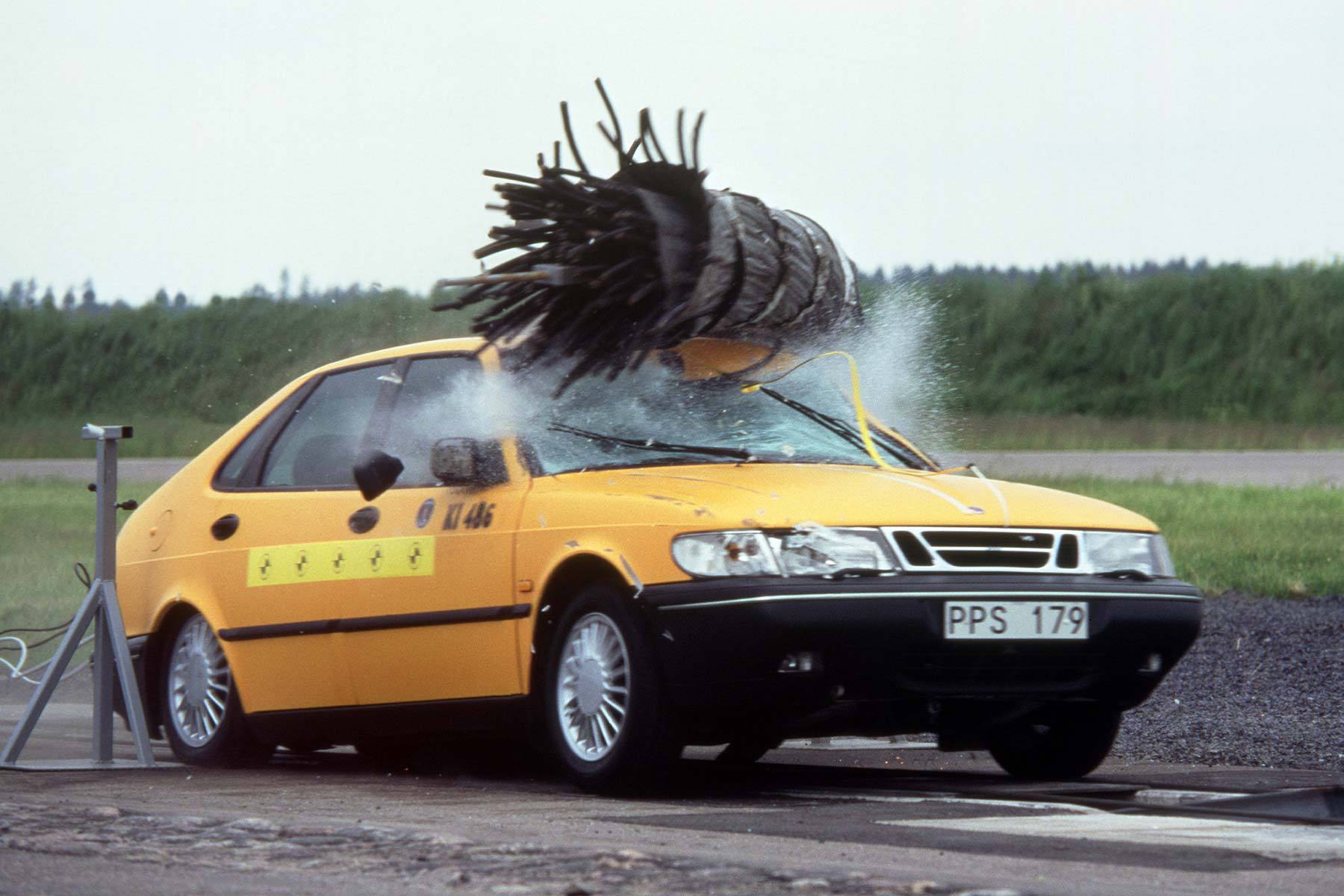
Moose “Dummy” for Testing
A little later, when Saab started producing models 9-3 and 9-5, engineers has developed a better moose “dummy” for testing — a cloth-wrapped bundle of cables that more closely simulates the affect the impact has on the moose’s body, which, judging by the anecdotes, is considerable.
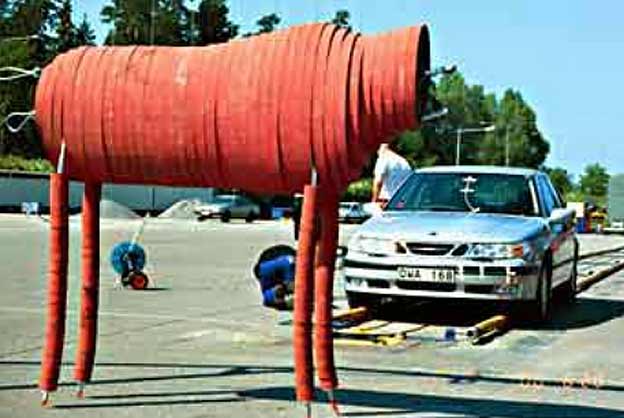
The upshot of all of this is that Saabs are deliberately built with very strong A-pillars, and the leading edge of the roof is reinforced to avoid collapse even with a great deal of downward impact. Even the glass is specially tested to insure additional strength.
To add this to the whole presentation, average deer-moose-elk hit is usually at least $3000 – $5000 cost for car owners. Deer and hail storms are great for bodyshop business.











